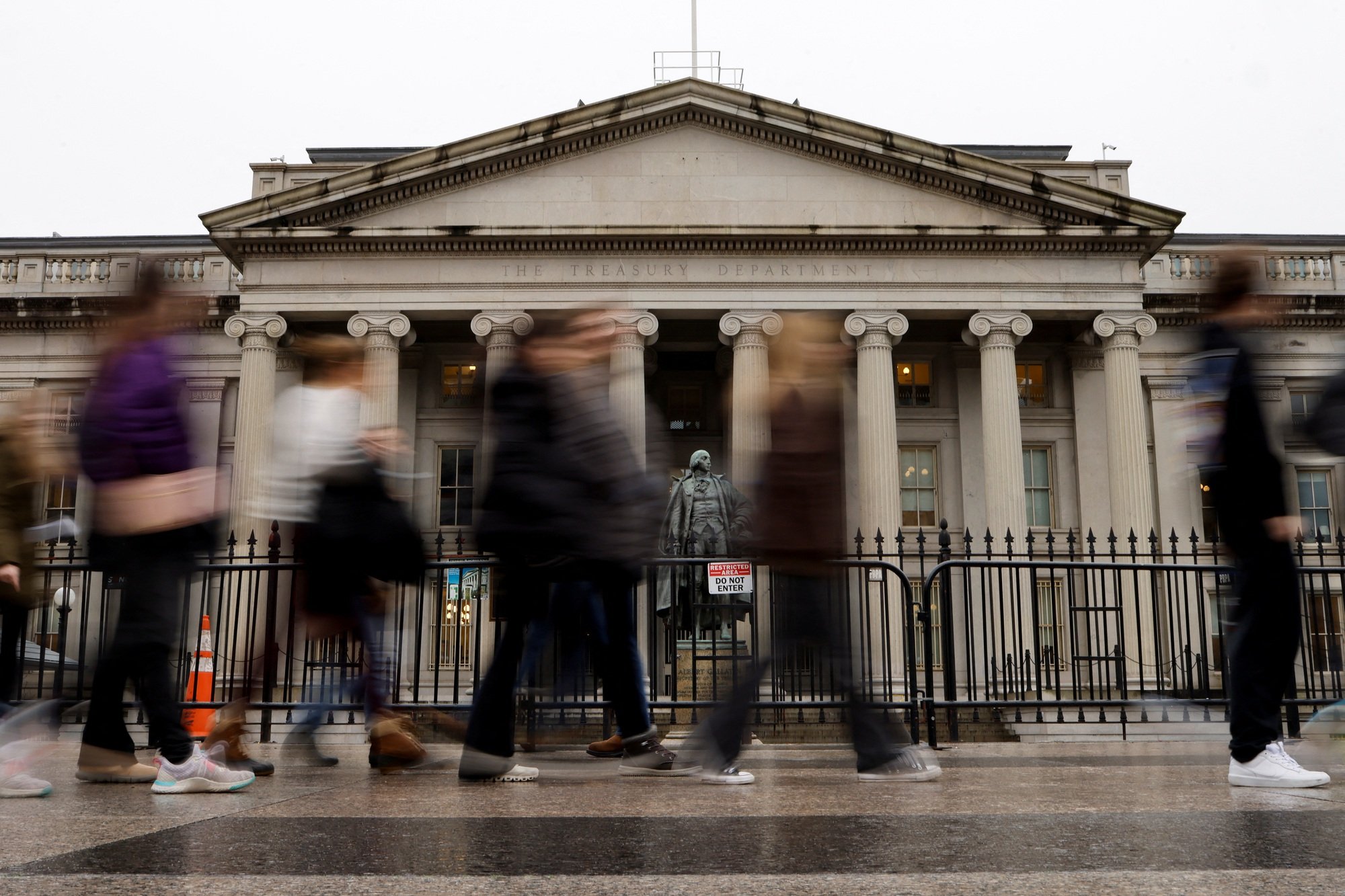The US Treasury Department announced on October 20 that the budget deficit for fiscal year 2023 (ending at the end of September) was $1,695 billion, an increase of $320 billion (23%) compared to the previous fiscal year, Reuters reported.

US Treasury Building
If the Supreme Court does not oppose President Joe Biden's student loan forgiveness plan, the budget deficit could increase by another $321 billion.
Falling revenue while spending on Social Security, Medicare and federal debt interest rose to record highs contributed to the deficit, Reuters reported.
Meanwhile, officials in the administration of President Joe Biden said the deficit was due to a sharp decline in federal revenues, after a sharp increase due to the rapid recovery from the Covid-19 pandemic. Federal revenues in fiscal year 2023 are $4.439 trillion, down 9.3% from fiscal year 2022, mainly due to a $456 billion drop in personal income tax revenues.
Federal Reserve profits also fell $106 billion as interest payments to banks rose.
Spending in fiscal 2023 is down $137 billion (2%) from the previous fiscal year, to $6,134 billion. This would have been lower if not for sharp increases in retirement and health care spending and interest payments. The federal debt is more than $33 trillion, and the US paid a record $879 billion in interest in fiscal 2023, up 23%.
Lacking US aid, Ukraine worries it won't be able to pay civil servants and teachers
In 2020, when the Covid-19 pandemic broke out globally, the US budget deficit peaked at $3,130 billion. In the following two years, the deficit gradually decreased but increased again in 2023.
The deficit in fiscal year 2023 is 6.3% of gross domestic product (GDP). The Congressional Budget Office warns that based on current tax and spending laws, the US budget deficit will approach Covid-19 levels before the end of the decade, possibly reaching $2.13 trillion by 2030 as interest, health care and retirement costs rise.
Source link


![[Photo] General Secretary To Lam, Secretary of the Central Military Commission attends the 12th Party Congress of the Army](https://vphoto.vietnam.vn/thumb/1200x675/vietnam/resource/IMAGE/2025/9/30/9b63aaa37ddb472ead84e3870a8ae825)
![[Photo] Panorama of the cable-stayed bridge, the final bottleneck of the Ben Luc-Long Thanh expressway](https://vphoto.vietnam.vn/thumb/1200x675/vietnam/resource/IMAGE/2025/9/30/391fdf21025541d6b2f092e49a17243f)

![[Photo] President Luong Cuong receives President of the Cuban National Assembly Esteban Lazo Hernandez](https://vphoto.vietnam.vn/thumb/1200x675/vietnam/resource/IMAGE/2025/9/30/4d38932911c24f6ea1936252bd5427fa)
![[Photo] The 1st Congress of Phu Tho Provincial Party Committee, term 2025-2030](https://vphoto.vietnam.vn/thumb/1200x675/vietnam/resource/IMAGE/2025/9/30/1507da06216649bba8a1ce6251816820)
![[Photo] Solemn opening of the 12th Military Party Congress for the 2025-2030 term](https://vphoto.vietnam.vn/thumb/1200x675/vietnam/resource/IMAGE/2025/9/30/2cd383b3130d41a1a4b5ace0d5eb989d)


































































































Comment (0)